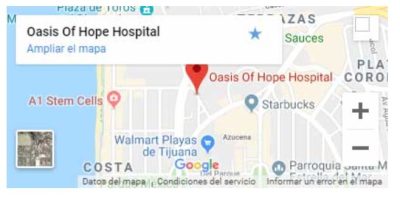[vc_row full_width=”” parallax=”” parallax_image=””][vc_column width=”1/1″][vc_column_text]
Contreras Metabolic Integrative Therapy Research
Chapter 13: Surgery and Radiation Therapy at Oasis of Hope
Localized tumor masses can often be effectively treated by radiotherapy or surgical excision. Such measures are often curative in early stage cancer, and can be used to relieve pain or pressure in patients with more advanced disease. Like other credible cancer clinics, Oasis of Hope uses surgery or radiotherapy when they are warranted. But, unlike most other cancer clinics, we use a variety of adjuvant measures that are intended to make radiotherapy more effective, and surgery less traumatic.
Tumor cells are often hypoxic because the vascular system feeding tumors tends to be haphazard and inefficient. Unfortunately, effective cell killing by radiation requires the presence of molecular oxygen, as this catalyzes the damage to cellular DNA (1). Thus, hypoxic tumor cells can be less sensitive to radiotherapy than are healthy normal tissues that are well oxygenated. For this reason, Oasis of Hope employs several adjunctive strategies intended to boost tumor oxygen content. The oxygen-transporter Perftec, the anti-inflammatory agent pentoxifylline, and ozone autohemotherapy work in various complementary ways to: increase the oxygen content of the blood; make red and white blood cells more distensible so that blood can flow through tumors more efficiently; and increase the capacity of red blood cells to deliver oxygen to tissues (2-5). These strategies have a selective impact on the radiosensitivity of hypoxic tumor regions, since increasing the oxygenation of healthy tissues that are already well oxygenated has little impact on the radiation response of healthy tissues. These measures are also used in conjunction with chemotherapy or intravenous vitamin C, since poor oxygenation can make tumor cells less responsive to these therapies as well (6-7).
Pentoxifylline is a safe anti-inflammatory drug that has been in use for decades. Numerous studies in tumor-bearing rodents have shown that administration of tolerable doses of pentoxifylline can boost the oxygen content of tumors and thereby improve the responsiveness of these tumors to radiotherapy (3,4). Pentoxifylline appears to achieve this by making leukocytes as well as red cells more distensible – an effect similar to that of ozone autohemotherapy – while also lessening the resistance to tumor blood flow by decreasing tumor “interstitial pressure.” Since Perftec is currently available only in Mexico and Russia, pentoxifylline may be a good alternative for cancer clinics that Oasis of Hope will open in the future around the world.
Oasis of Hope employs additional strategies to make cancers more sensitive to radiotherapy. Salsalate and silibinin, by suppressing the activation of a cellular factor known as NF-kappaB (8-11), block a key mechanism whereby radiated tumor cells increase their survival (12). Good vitamin D status, assured through effective vitamin D supplementation, can also improve the radiation responsiveness of some tumors (13-14). Glutamine, a prominent component of our GPG supplement, has been shown to protect the health of intestinal tissues exposed to radiation (15-16).
With respect to surgery, the comprehensive nutritional support provided to our patients can be expected to promote efficient healing. One of the risks associated with cancer surgery is that the systemic inflammation, immunosuppression, and dislodgement of tumor cells associated with such surgery can increase the risk that new metastases will form in the post-surgical period. Anti-inflammatory agents such as cimetidine and salsalate, as well as immunosupportive nutrients such as melatonin and selenium, are employed by Oasis of Hope in conjunction with surgery, and are intended to minimize the risk that surgery will provoke new metastasis formation (17-22). When our patients undergo major surgery that entails significant blood loss, we are able to employ a type of “artificial blood,” an oxygen-carrying chemical emulsion known as “Perftec” (23). This ensures that the patient’s brain and other vital organs continue to receive adequate oxygenation during the surgery and recovery period, without the need for blood transfusions. Blood transfusions, especially if the blood has been stored for long periods of time, can often trigger inflammatory reactions that can complicate post-surgical recovery, and in some instances can lead to life-threatening multiple organ failure (23). Perftec, or analogous blood substitutes, are not available in the U.S. or most other countries as of yet. It was registered for commercial medical use in Mexico by the Secretary of Health in November 2005 and is used in Oasis of Hope and other leading medical institutions throughout the nation.
A recent clinical trial, conducted in patients subjected to cardiac surgery with cardiopulmonary bypass, showed that infusion of Perftec emulsion enhanced patient safety during periods of intraoperative anemia, decreased the percentage of patients who required blood transfusion, reduced the units of allogeneic packed red blood cells transfused per patient, and significantly reduced the use of blood derivatives (23).[/vc_column_text][/vc_column][/vc_row]




